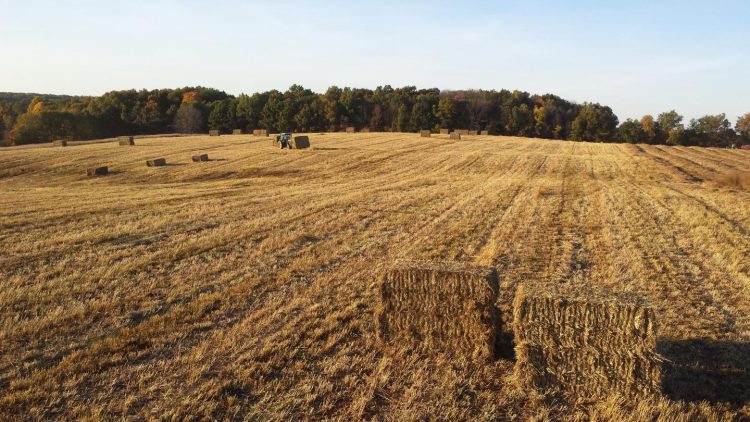Perennial biofuel crops' water consumption similar to corn

Michigan State University research shows that perennial crops' evapotranspiration did not differ greatly from corn -- a finding that contrasts sharply with earlier studies. Courtesy of Michigan State University
In humid climates such as the U.S. Midwest, evaporation returns more than half of the annual precipitation to the atmosphere, with the remainder available to recharge groundwater and maintain stream flow and lake levels.
A recent study from the Great Lakes Bioenergy Research Center and published in Environmental Research Letters looks at how efficiently “second generation” biofuel crops – perennial, non-food crops such as switchgrass or native grasses – use rainwater and how these crops affect overall water balance.
The study, led by Michigan State University professor of ecosystem ecology and GLBRC scientist Stephen Hamilton, is the first multi-year effort to compare the water use of conventional corn crops to the perennial cropping systems of switchgrass, miscanthus, native grasses, restored prairies and hybrid poplar trees.
“When we established the different cropping systems in 2008,” Hamilton said, “we installed soil-water sensors at various depths through the root zone. We've been continuously monitoring the soil water content ever since.”
Hamilton uses the soil-water sensors to measure the rate of evapotranspiration occurring within each cropping system. Evapotranspiration refers to the sum total of water lost while the plant is growing, either from transpiration, which is evaporation through the plant stem itself, or from water evaporated off of the plant's leaves or the ground. By measuring the amount of precipitation that has fallen against actual soil water content, it's possible to quantify the water lost to evapotranspiration while each crop is growing.
Hamilton's team reports that the perennial system's evapotranspiration did not differ greatly from corn – a finding that contrasts sharply with earlier studies that found particularly high perennial water use in areas with high water tables. Hamilton's study, however, took place in Michigan's temperate humid climate and on the kind of well-drained soil characteristic of marginal farming land.
“The message here,” Hamilton said, “is that in many settings, perennials may not use more water. For well-drained soils in the upper Midwest at least, and probably for eastern North America in general, these results most likely apply, and water balance would not be adversely affected.”
Though the study has clear implications for cellulosic, or second-generation, biofuel production in the Midwest, Hamilton says it touches more broadly on some of the expected effects of climate change as well.
Since the evapotranspiration rates of the study's cropping systems held steady across several years of varying precipitation levels, the study also suggests that crop evapotranspiration rates may not be as sensitive to climate change as is currently assumed.
“Our observation that plants use roughly the same amount of water regardless of water availability suggests that a warmer or longer growing season may have a relatively small effect on evapotranspiration and thus could affect landscape water balances less than we previously thought,” Hamilton said. “Other changes in climate-driven aspects of the water cycle, such as intense rain events, less snow or shorter periods of ice cover on lakes, may have a much larger effect on groundwater, stream flow and lake levels.”
###
Additional MSU scientists contributed to this research, including Phil Robertson, Mir Hussain, Ajay Bhardwaj and Bruno Basso.
This research was funded by the GLBRC.
Media Contact
All latest news from the category: Agricultural and Forestry Science
Newest articles

Properties of new materials for microchips
… can now be measured well. Reseachers of Delft University of Technology demonstrated measuring performance properties of ultrathin silicon membranes. Making ever smaller and more powerful chips requires new ultrathin…

Floating solar’s potential
… to support sustainable development by addressing climate, water, and energy goals holistically. A new study published this week in Nature Energy raises the potential for floating solar photovoltaics (FPV)…

Skyrmions move at record speeds
… a step towards the computing of the future. An international research team led by scientists from the CNRS1 has discovered that the magnetic nanobubbles2 known as skyrmions can be…





















